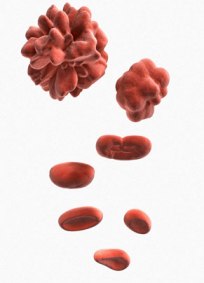Aplastic Anemia (AA) treatment depends on the severity of the bone marrow failure.
Aplastic Anemia is the medical term for the failure of the bone marrow, a red spongy tissue in the center of the bone that produces sufficient blood cells–red blood cells, white blood cells, and platelets–for the blood circulation.
As the blood cells die off naturally, new blood cells formed in the bone marrow replace them.
In aplastic anemia, the bone marrow cell production fails leaving the body vulnerable to organ damage, heart failure, bleeding, and infection. Acquired and hereditary are two types of Aplastic anemia that can strike organs and tissues of the body.
Aplastic Anemia treatment Options
The treatment options for aplastic anemia are different depending on the age and severity and other health conditions. The severity of AA is classified as Moderate AA, Severe AA, and Very Severe AA.
Bone Marrow Transplants (BMT):
For severe or very severe aplastic anemia, Bone Marrow Transplant is the preferred standard treatment option. This is known as an allogeneic sibling transplant.
The transplant replaces the damaged stem cells in the bone marrow with healthy bone marrow stem cells. For a successful bone marrow transplant, a donor’s bone marrow is needed and it must match the receiver’s tissue type as closely as possible.
Immunosuppressive Therapy:
It is a standard drug therapy that offers a long life for severe aplastic anemia sufferers. The therapy is based on the fact that aplastic anemia is due to the attack of immune system against the bone marrow.
The immunosuppressive drugs suppress the immune system to keep it away from bone marrow cells damage.
Antithymocyte globulin (ATG) and Cyclosporine are the immunosuppressive drugs that deteriorate the immune system’s response and allow the bone marrow to produce blood cells again. A combination of these drugs with steroids is preferred to ease the side effects.
Blood Transfusions:
Severe or very severe aplastic anemia needs blood transfusions. Transfusions are important treatment to manage the effects of aplastic anemia. A blood transfusion keeps the blood count high enough that has been stopped by bone marrow failure.
Blood transfusion needs healthy blood from donors that matches the receiver’s blood. The healthy blood transmits the blood cells through an injection in a vein.
Red Blood Cells Transfusion:
The transfusion is usually done when the hemoglobin level is below 8 grms/ deciliter. It increases the red blood cells count. It helps the body’s immune system learn to identify the new cells, develop antibodies, and kill the newly transfused cells.
However, the raise in the red blood cells builds up excess iron, which can damage the heart, liver, and other organs. Thus, treatment can be required to eradicate excess iron from the body.
White Blood Cells Transfusion:
White blood cells (granulocytes) are transfused rarely because they last for a few hours in the bloodstream.
The transfusion of donor’s white blood cells must be done immediately, as the granulocytes do not last longer time. The WBC transfusion is usually used for severe infections that antibiotics cannot help.
Platelets:
Platelet transfusions increases the platelets count and prevents bleeding and bruising. The transfused platelets live only two to three days. Regular platelets transfusions are needed until the body starts producing its own platelets.
This is a basic overview of aplastic anemia and its treatment options. However, consult your doctor and know more about your specific condition along with possible treatment options.







I am suffering from Aplastic Anemia and i am taking High-Dose Cyclophosphamide, how much chances to get fit mine. tell me detail please?
9350145197, 0124-4210958
Hi Rajesh,
The effectiveness of cyclophosphamide depends on whether you had bone marrow transplantation (BMT) or not. If you take Cyclophosphamide and had BMT, then you will notice a rapid recovery from your condition. Taking only Cyclophosphamide need some time to recover and it depends on severity of your condition.
Sir, My father has been diagonized and reported as having the aplastic anemia. he has advised to take cyclosporine for 15 days and come back for blood count analysis.
Since he also had some viral infection, the viral load is very low as per doctor. he has been given some antiviral tablets also.
what may be the out come, if the blood count get increased , can we assume that he will be normal in coming days ?
vivek,
only cyclosporin is of not much help as it has only 30% cure rate,a better option is to go for combination of ATG (antithymocyte globulin) and CYCLOSPORIN.
How much time alive for Aplastic Anemia Paitient ?
i am 43yrs.i am suffering with aplastic aneamia last 1year only comes to know and did bone marrorow test 2times they r taken and today date my blood hb 11.4 and platelets 79000 and taking cyclosprine 125mg morning and evening 125mg how long can i survive and i want to know the resultlike what to do and where to do? because i have small kid age of 7years i wnat to know more [pl help?